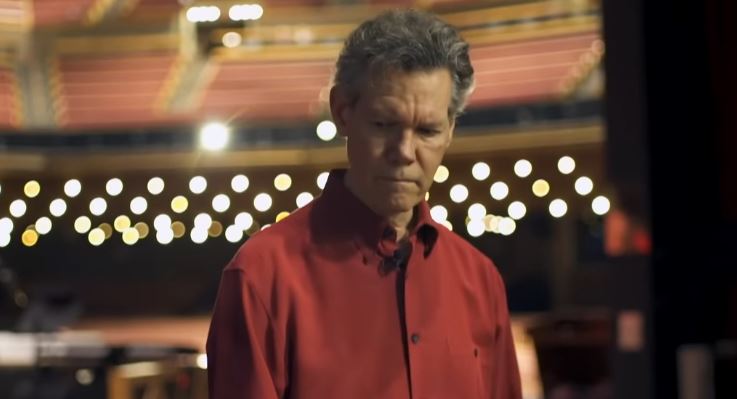Few could have predicted the cascade of events that would ensue when Randy Travis passed out in 2013 after a routine workout. After receiving a diagnosis of viral cardiomyopathy, his health quickly deteriorated and he suffered a fatal stroke that rendered him unconscious. What ensued was a struggle for identity—a renowned voice imprisoned in silence—as well as a fierce physical conflict. He has been reinventing what it means to live, to perform, and to inspire for more than ten years.
Even though Travis faces the everyday challenges of aphasia, a condition that significantly impairs speech and comprehension, his public presence has grown over the past few years. From award shows to unexpected cameos on The Price Is Right, every appearance represents a significant change in how the general public views illness and recovery. Travis has evolved beyond a performer with his wife Mary at his side, translating words he is unable to fully form. He is now seen as a representation of tenacity.
Randy Travis – Bio & Career Table (WordPress Friendly)
| Category | Details |
|---|---|
| Full Name | Randy Bruce Traywick |
| Stage Name | Randy Travis |
| Date of Birth | May 4, 1959 |
| Age (2025) | 65 Years Old |
| Spouse | Mary Travis (Mary Davis) |
| Major Health Event | Stroke in 2013 resulting from viral cardiomyopathy and congestive heart failure |
| Health Condition | Aphasia, limited mobility |
| Career Start | 1978 (initially performing under the name Randy Ray) |
| Breakthrough Album | Storms of Life (1986) |
| Popular Songs | “Forever and Ever, Amen”, “Three Wooden Crosses”, “Deeper Than the Holler” |
| Grammys Won | 7 Grammy Awards |
| Recent Projects | 2024 AI-assisted single “Where That Came From”, 2026 biopic “Forever and Ever, Amen” |
| Philanthropy | Randy Travis Foundation – supports stroke and aphasia awareness, and music education |
| Comeback Highlights | 2016 Country Music Hall of Fame induction, 2024 Opry 100 appearance, AI-assisted music releases |
Travis has made an incredible comeback to recording by incorporating artificial intelligence into his musical journey. His first new single in more than ten years, “Where That Came From,” was released in May 2024. The song evoked strong feelings in both the artist and his fans thanks to its sophisticated voice modeling and archived vocal samples. Mary claims that Randy sat in silence, clearly moved to hear his own voice again, and that his eyes welled up when he heard the final mix.
His experience has strikingly paralleled more general developments in AI-powered rehabilitation technologies. The application of AI in voice recreation is changing the way that people view vocal loss, much like how AI-powered prosthetics have assisted in restoring mobility. Travis’ journey serves as a model for people with aphasia, providing not only visibility but also real hope.

Carrie Underwood honor him with two of his favorite songs during the Grand Ole Opry’s 100th anniversary celebration in March 2025. She turned the microphone to Travis as she got to the last line of “Forever and Ever, Amen.” Even though he didn’t say much, his quiet “Amen” reverberated more than any cheers. For a man who had previously been given a 1% chance of survival, that moment—which went viral right away—marked an emotional turning point.
Travis has also dabbled in film narrative through strategic collaborations with producers. Forever and Ever, Amen, an upcoming biopic, is currently under development. The movie, which is slated for release in 2026, stars Clay Walker, a country music artist. The movie seeks to accurately portray Travis’s ascent to fame, his health issues, and his unwavering faith—it is more than just a tribute. As executive producer, Mary stressed the value of presenting the story honestly, without being sanitized.
Travis has had a startling array of medical procedures since his first hospitalization in 2013: two brain surgeries, three tracheotomies, a great deal of physical therapy, and several rounds of critical care. These were pivotal moments, not merely therapies. For example, Randy was finally able to go home in time for Thanksgiving that year after switching to a stronger antibiotic. A new chapter that was centered on living with purpose as well as healing was ushered in by the emotional gravity of that homecoming.
His foundation now actively promotes music education and stroke rehabilitation. Travis has improved public awareness of aphasia, a disorder that affects more than 2 million Americans but is still mainly misunderstood, by drawing on his own experience. In rural areas, where access to and healthcare literacy can frequently be low, the foundation’s outreach initiatives have proven especially successful.
Travis has even managed to go on tour once more, which is incredible. Announced in early 2025, the More Life Tour will play more than 30 dates nationwide. The band, led by guest vocalist James Dupré, creates performances that are considerate of Travis’ condition. However, his seated, supported, and unquestionably commanding presence on stage provides an authentic connection that neither a hologram nor a digital stream can match.
Travis’s story is clearly forward-looking, in contrast to narratives that frequently focus on decline. He is a pioneer, not merely a patient or a performer. His capacity to adjust with dignity and perseverance is indicative of a change in the way society perceives aging and long-term sickness. Travis demonstrates that artistic identity can endure even when expression takes on a different form, much like Val Kilmer, whose vocal cords were damaged during cancer treatment, or Bruce Willis, who has also experienced aphasia.
In a 2020 interview, Mary openly talked about the ups and downs of her recovery. Her statement that “every little thing is such a huge thing” portrayed a picture of incremental hope. This lived-experience-based viewpoint serves as a reminder to viewers that advancement is rarely linear but is always cause for celebration.
Travis’ infrequent appearances continue to attract large audiences out of respect rather than nostalgia. Supporters understand that every move, every word, and every smile that is displayed on stage or screen is the product of countless hours of work. Travis provides authenticity gained via hardship, which is far more valuable in a field that is frequently fixated on perfection.
